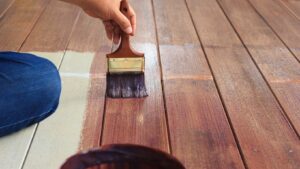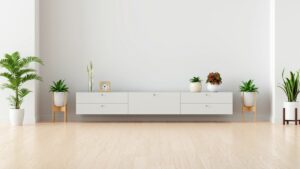Decorating a home isn’t just about the walls and furniture. It’s also about the floor, an often overlooked aspect of home decor. From rugs and carpets to tiles and hardwood, the floor is a canvas waiting to be adorned.
Floor decor can completely transform the ambiance of a room, making it cozy, elegant, or vibrant. It’s a key element in creating a harmonious and stylish living space.
Home and Floor Decor

Indeed, decor enthusiasts are turning their gaze downward and seeing the potential that lies beneath their feet. Dominating the trend charts, it’s evident that bold, patterned floors have established their presence in the decor world. Dramatic geometric patterns in striking colors can become the statement piece of a room, often eliminating the need for other complex decor elements.
Likewise, sustainable materials, once an afterthought, now command the floor decor spotlight. Reclaimed wood brings rustic charm, while Cork floors, known for their resilience and soundproofing qualities, are gaining popularity. Not to forget, materials like bamboo represent a compelling blend of sustainability and style.
Additionally, understated luxury defines the latest trend – Terrazzo. It’s an elegant compilation of marble, quartz, granite, and glass chips set in a cementitious or resinous base, offering both durability and a touch of refinement.
Finally, DIY painted floors are gaining traction among decor enthusiasts who are keen to express their personal style. A simple stencil design rendered in a contrasting color could make all the difference.
Choosing the Right Flooring for Your Home

Selecting suitable flooring demands consideration of factors such as budget, lifestyle, and design aesthetics. Hardwood floors, known for their durability and classic appeal, accommodate families who prefer traditional designs. They allow scratches from constant traffic or pet claws, a testament to their lifespan. In rooms that experience moisture or spills, like kitchens and bathrooms, ceramic or stone tiles prevail due to their water-resistant properties.
Those looking for sustainable options might prefer cork or reclaimed wood floors, which marry environmental responsibility with style. For homeowners craving curation in their decor, DIY painted floors offer a canvas for creativity. Laminate flooring, providing a cost-effective alternative, mimics the look of more expensive materials without denting budgets too heavily.
Sustainable Practices in Home Decor
In light of a growing awareness for environmental conservation, sustainable practices in home decor are gaining attention in the design world. Incorporating such practices doesn’t only protect our ecosystem, but it also imparts houses with a distinct look. An example is the use of reclaimed wood, derived from structures that are no longer in use, like old barns and factories, provides a rustic charm to spaces. Cork, another viable option, comes from the bark of a cork oak tree – a renewable resource as the tree isn’t cut down for its extraction, promoting ethical practices.

Switching to LED lights from traditional incandescent bulbs represents another sustainable shift. LEDs consume 75% less energy and last 25 times longer, according to the U.S. Department of Energy, providing substantial savings in energy usage. Beyond materials and lighting, interior designers recommend plants as natural air purifiers, eliminating toxins from indoor environments.
Tips for Maximizing Small Spaces
Floor decor isn’t just about aesthetics, it’s a vital part of home design that reflects personal style, budget, and lifestyle needs. With plenty of options from durable hardwood to moisture-resistant tiles, there’s a perfect fit for every home. But it’s not all about the floor. Embracing sustainable home decor practices can make a big difference too. Opting for reclaimed wood, cork, or transitioning to energy-efficient LED lights are all smart moves. Incorporating plants isn’t just trendy, it’s a natural way to purify air. Remember, sustainable home decor isn’t just about the products you choose. It’s about adopting a mindset that values resource efficiency and considers a product’s entire lifecycle. It’s about making choices that are as good for the planet as they are for your home.

